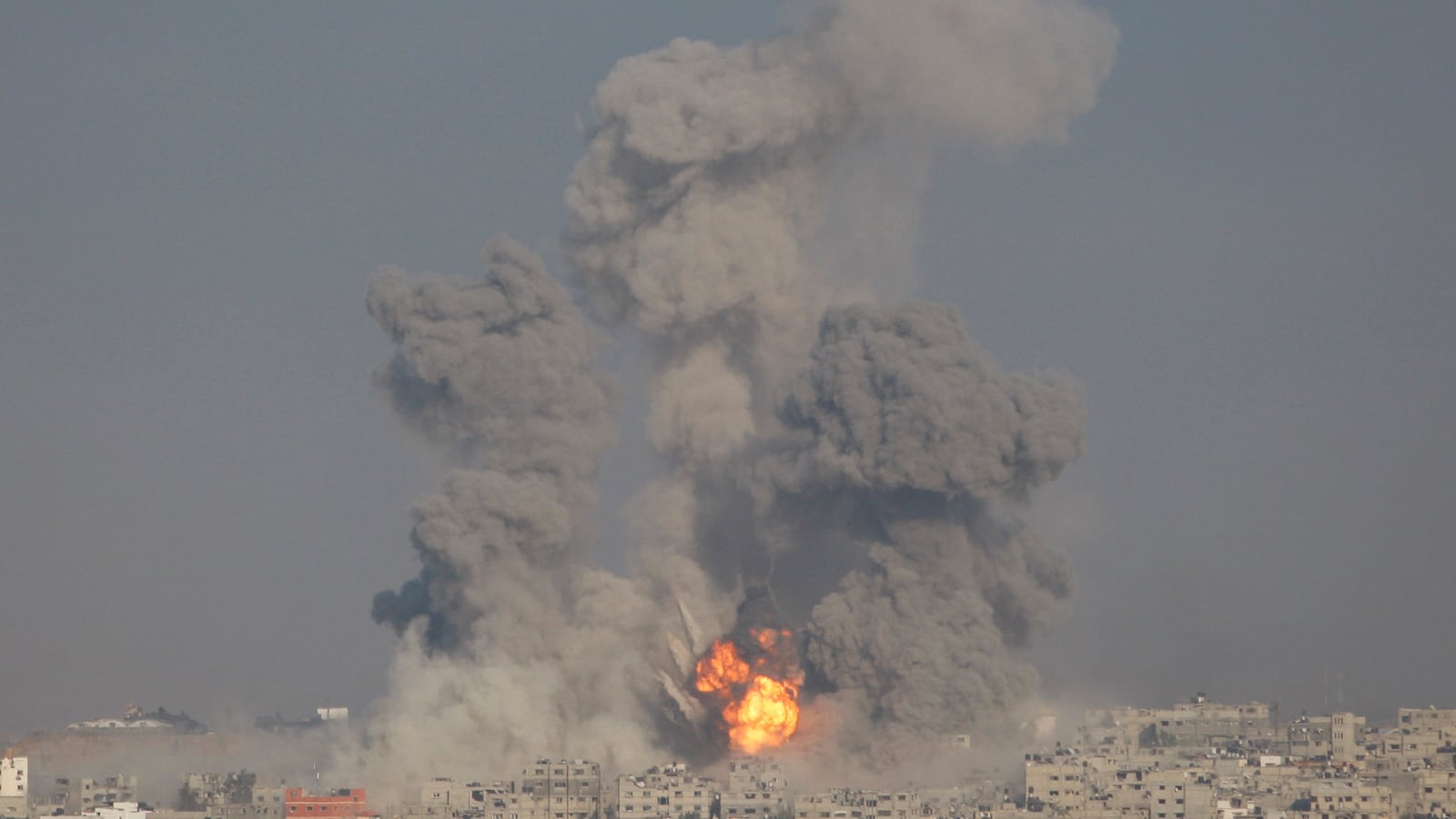GAZA CITY — Israel’s assault on Gaza has hit a new level of intensity as its navy, artillery, drones and F16s rain fire on residents across the besieged strip.
As the dust cleared this morning after a night of bombardment that felt as if it would never end, Gaza’s main power plant was out of commission and the already brittle civilian infrastructure lay in shards. The Gaza City port had been bombed and the finance ministry was flattened. Tens of thousands more people had fled their homes as Israeli flares lit up the night sky, and shells and rockets pounded residences, businesses and government buildings. By Tuesday afternoon over 100 more Gazans had been added to the list of more than 1,000 who had died earlier in what Israel calls Operation Protective Edge.
Although the stated aim of Israel’s offensive is to end the threat of rockets and missiles launched from Gaza, and to destroy the system of underground tunnels Hamas has built as part of a guerrilla campaign, it is civilians that have mostly been killed or had their homes, businesses, and communities obliterated. Few in Gaza will see a campaign that has now targeted civilian infrastructure as anything less than collective punishment for having a leadership that fights back.
Read More: Israel Shrinks Gaza by 40 Percent
The power plant is a loss with particularly far-reaching consequences. According to Hayat abu Salah, spokesperson for the United Nations Office for the Coordination of Humanitarian Affairs (OCHA), it will need major repairs before it can be put back on line. “This will affect the provision of water and sanitation services,” she said. “It will impact the operation of health facilities.”
With more wounded pouring into Gaza hospitals every day, they are already stretched. The emergency room of Gaza City’s Al Shifa Hospital is running out of supplies and was already coping with massive complications created by power cuts. The maternity ward has lost premature babies because it was unable to keep the incubators running.
In the emergency room yesterday afternoon, young children writhed in pain on gurneys waiting for scrambling ER doctors to attend to them following an air strike on the Al Shati Refugee camp. Nine of the 10 people killed in the attack were children and many more were wounded. As a doctor rushed from taking shrapnel out of a man’s back over to a 4-year-old boy screaming in pain, the lights flickered. And that was before the power plant was hit.
Coping will be more difficult next time, and with the way this war is heading, there will be many next times.
Read More: Power Shortages Hit Gaza Maternity Wards
This is not the first time Israel has knocked out Gaza’s power plant and targeted essential infrastructure. Indeed, this is almost part of a standard playbook. Following Hamas’ kidnapping of Israeli soldier Gilad Shalit in 2006, Israel plunged Gaza into darkness with a retaliatory strike on the power plant. The bombing and escalation in Gaza set off a series of events that led to a full-on war in Lebanon as well as Gaza.
I have tried many times to reach the spokespeople for the Hamas government in Gaza. But they have stopped answering their phones and have been nowhere to be seen since the attacks escalated.
It is people like the al Wakeel family who pay the harshest price for this military duel. They fled the Al Shajaya neighborhood under intense shelling last week, and 55 family member are now crammed into a three-bedroom apartment in Gaza City. With little water and only a few hours of electricity a day they were unable to shower or bathe the 25 children in the apartment. Now that the power plant has been hit, they have no water and no electricity.
In their home, mattresses litter the flood as people squeeze into any corner they can. “I know it’s not safe to sleep out here,” said Sabed al Wakeel, a father of seven, as he shows me two mattresses crammed onto a narrow balcony. “But there is nowhere left inside.”
The apartment smells like a mix of cooked rice and sweat. Clothes that can’t be washed pile up in corners. Most of the family have small flashlights so they don’t trip over each other at night and the teens are constantly running out to a nearby store that still has some power from a generator to try to charge their cellphones.
Sabed al Wakeel says he has not idea how to cope anymoere. “We just sit in the dark and don’t do anything.”
And then the flares light up the sky and the building begins to shake from the deadly thunder of Protective Edge.






